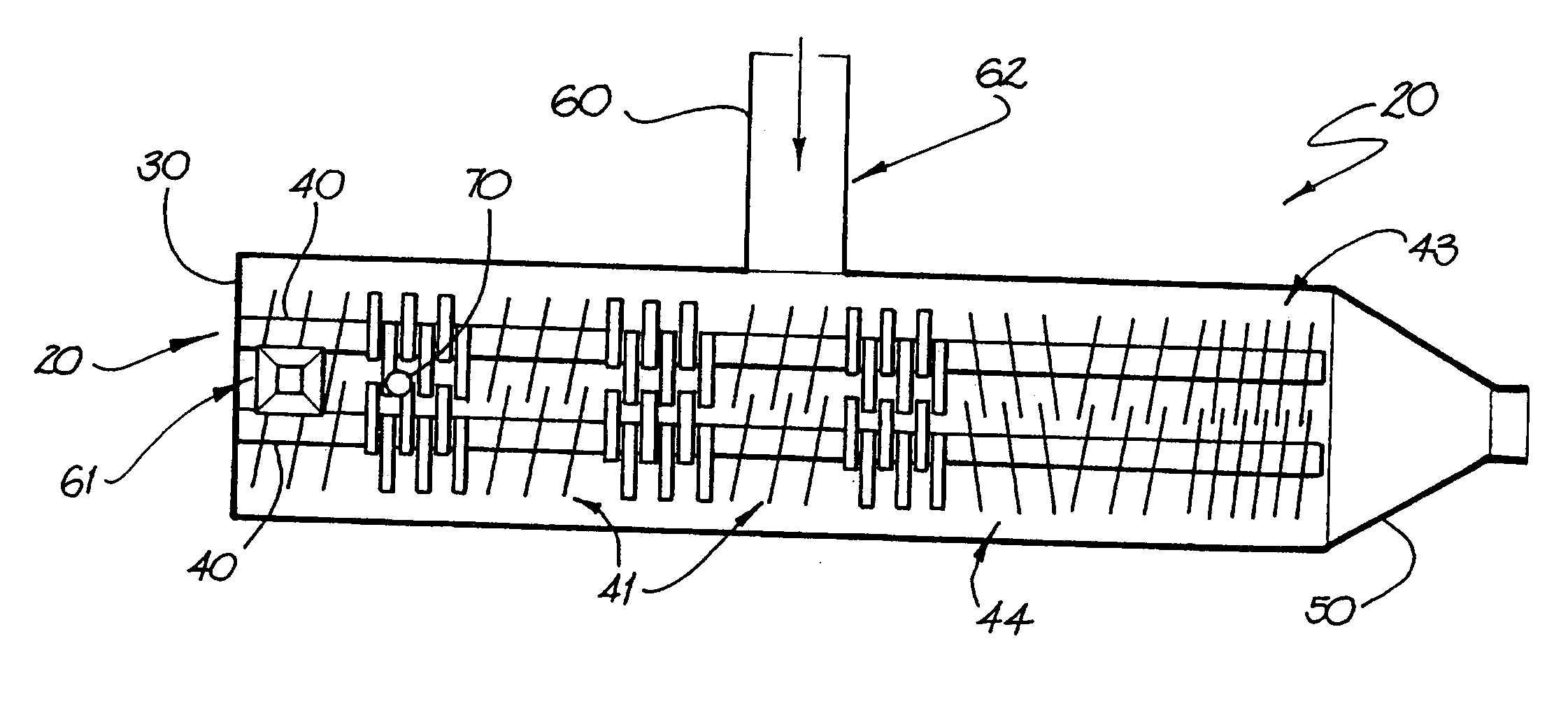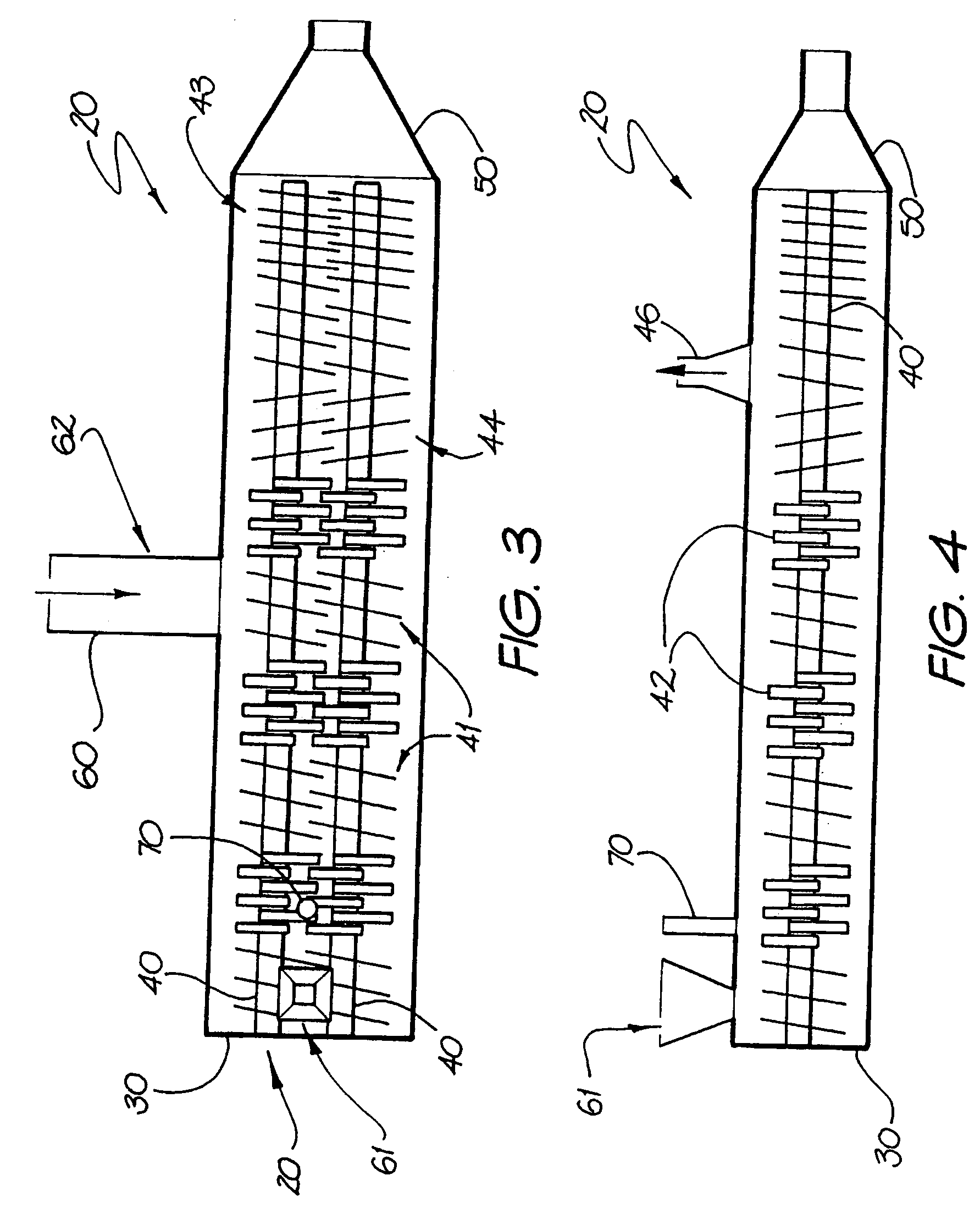Method and apparatus for extruding cementitious articles
a cementitious article and extruder technology, applied in the direction of shaping presses, solid waste management, sustainable waste treatment, etc., can solve the problems of reduced commercial viability, uncontrollable backflow of material, and high pressure at the die, so as to reduce the amount of uncontrollable backflow and reduce the clean-up time
- Summary
- Abstract
- Description
- Claims
- Application Information
AI Technical Summary
Benefits of technology
Problems solved by technology
Method used
Image
Examples
Embodiment Construction
[0032] Turning firstly to FIG. 1, a brief explanation of the conventional fibre cement extrusion process will assist in recognising the unique characteristics of the new process and apparatus.
[0033] In FIG. 1, the various components of the fibre cement are provided to a weighing plant 1. This weighing plant provides the precise quantities of the various components to a mixer 2, where they are dry and / or wet mixed to the desired homogeneity and consistency. This material is then transferred as a batch to the kneader 30, which kneads the material once again with the optional addition of water. The cementitious solid or paste is then transferred as a batch to a feeder 4. This feeder provides a constant supply of cementitious material to the extruder 5. The entire process up to feeder 4 is a batch-type process.
[0034] The extruder 5 forces the cementitious material through die 6. It should be recognised, however, that the extruder simply compacts and forces the cementitious material th...
PUM
| Property | Measurement | Unit |
|---|---|---|
| Fraction | aaaaa | aaaaa |
| Fraction | aaaaa | aaaaa |
| Fraction | aaaaa | aaaaa |
Abstract
Description
Claims
Application Information
 Login to View More
Login to View More - R&D
- Intellectual Property
- Life Sciences
- Materials
- Tech Scout
- Unparalleled Data Quality
- Higher Quality Content
- 60% Fewer Hallucinations
Browse by: Latest US Patents, China's latest patents, Technical Efficacy Thesaurus, Application Domain, Technology Topic, Popular Technical Reports.
© 2025 PatSnap. All rights reserved.Legal|Privacy policy|Modern Slavery Act Transparency Statement|Sitemap|About US| Contact US: help@patsnap.com



